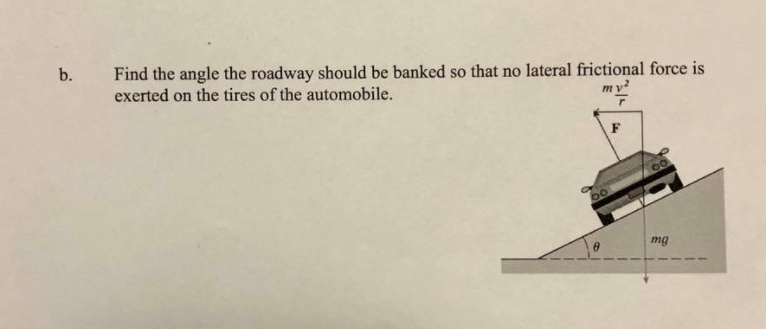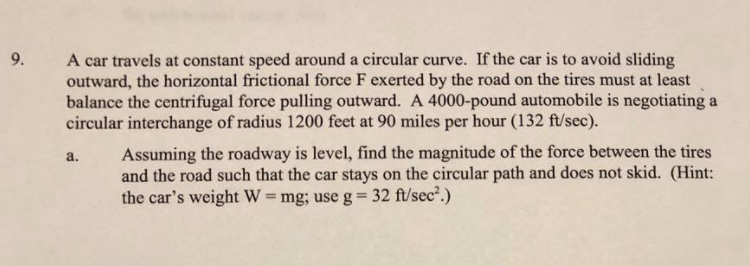A car travels at constant speed around a circular curve. If the car is to avoid sliding outward, the horizontal frictional force F exerted by the road on the tires must at least balance the centrifugal force pulling outward. A 4000-pound automobile is negotiating a circular interchange of radius 1200 feet at 90 miles per hour (132 ft/sec). Assuming the roadway is level, find the magnitude of the force between the tires and the road such that the car stays on the circular path and does not skid. (Hint: the car's weight W = mg; use g= 32 ft/sec2.) a. %3D %3D
A car travels at constant speed around a circular curve. If the car is to avoid sliding outward, the horizontal frictional force F exerted by the road on the tires must at least balance the centrifugal force pulling outward. A 4000-pound automobile is negotiating a circular interchange of radius 1200 feet at 90 miles per hour (132 ft/sec). Assuming the roadway is level, find the magnitude of the force between the tires and the road such that the car stays on the circular path and does not skid. (Hint: the car's weight W = mg; use g= 32 ft/sec2.) a. %3D %3D
Related questions
Question
100%
solve both the parts


Transcribed Image Text:A car travels at constant speed around a circular curve. If the car is to avoid sliding
outward, the horizontal frictional force F exerted by the road on the tires must at least
balance the centrifugal force pulling outward. A 4000-pound automobile is negotiating a
circular interchange of radius 1200 feet at 90 miles per hour (132 ft/sec).
Assuming the roadway is level, find the magnitude of the force between the tires
and the road such that the car stays on the circular path and does not skid. (Hint:
the car's weight W = mg; use g= 32 ft/sec2.)
a.
%3D
%3D
Expert Solution
This question has been solved!
Explore an expertly crafted, step-by-step solution for a thorough understanding of key concepts.
This is a popular solution!
Trending now
This is a popular solution!
Step by step
Solved in 2 steps with 2 images
